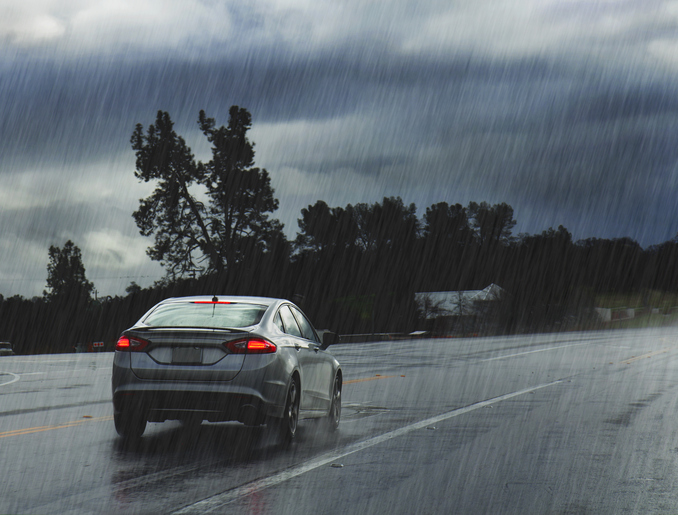Prepare Your Vehicle for Arizona’s Monsoon Season!
In Arizona, summer means monsoon season. From mid-June to late September, residents face the threat of severe heat, intense rains, high winds, flooding, and dust storms—a bevy of environmental hazards that can make for touch-and-go driving.
Anyone who plans to get behind the wheel should make a trip to a full-service car wash and monsoon-proof their car or truck so it’s ready to meet hazardous road conditions. It’s also important to know what to do and what not to do when the wind starts kicking up the dust and the rain pours down in torrents.
How to Monsoon-Proof Your Car
Before the storms hit, schedule some routine preventive maintenance. At the very least, you’ll want a mechanic to:
- Inspect Your Tires: Is the tread on your tires worn? Get new ones. It may seem like a big expense, but it’s one of the most important items on your checklist. Tires that can’t grip the road in inclement weather pose a hazard to everyone.
- Test Your Windshield Wipers: Check your windshield wipers to make sure they work. Inspect them visually and note if they’re worn. Try them and see if they streak the water instead of wiping it clean. If they’re not up to snuff, replace them. You don’t want to get stuck in a downpour with subpar wipers, and they may have to pull more than double duty during monsoon season.
- Examine Your Rubber Molding: If the rubber molding around your doors and windshields is loose, water can seep in and cause damage. In the worst-case scenario, it can short an electrical system.
- Check Your Lights: Headlights and brake lights are critical at any time but, particularly, during storms when visibility is low and stopping on a dime is more difficult. Make sure they’re in working order before June 15th comes around.
- Wax Your Car: Dust storms can scratch a car’s paint. The best way to protect the finish is to get the auto detailing experts at Cobblestone Auto Spa to spread on a coat of wax before the dust has a chance to ruin anything.
How to Drive in a Storm

- Slow Down: Unless you want to hydroplane, take it easy. Oil and water make for a slippery combination, and pools of water make your tires lose traction. Not only that, but low visibility means you’ll have less time to react to dangerous situations. Brake too quickly, and you could lose control.
- Avoid Dust Storms: Don’t attempt to drive through a dust storm. If you can’t see the road in front of you, pull off to the side, turn off your car, and keep your foot off your brake so other drivers don’t mistake you for a moving vehicle in the haze.
- Avoid Torrential Rain: Anything that lowers your visibility to near zero should be a clue that it’s time to stop. Whether it’s dust, rain, or fog that clouds your vision, pull off to the side of the road.
- Never Tailgate: This is a good rule at the best of times, but it can be a lifesaver during rough weather conditions. When the roads are slick, it takes you at least three times longer to brake. Keep that in mind next time you follow too closely during a storm.
- Wash Your Car: Wash your car immediately after a dust storm to minimize the chances of permanent scratches.
Monsoons can hit suddenly and unexpectedly. Spend a little time preparing now, and you won’t have to panic later. Inspect your vehicle, familiarize yourself with safe driving habits, use common sense, and always err on the side of safety. Start by locating “a car wash near me” and scheduling a preventive maintenance appointment today.


